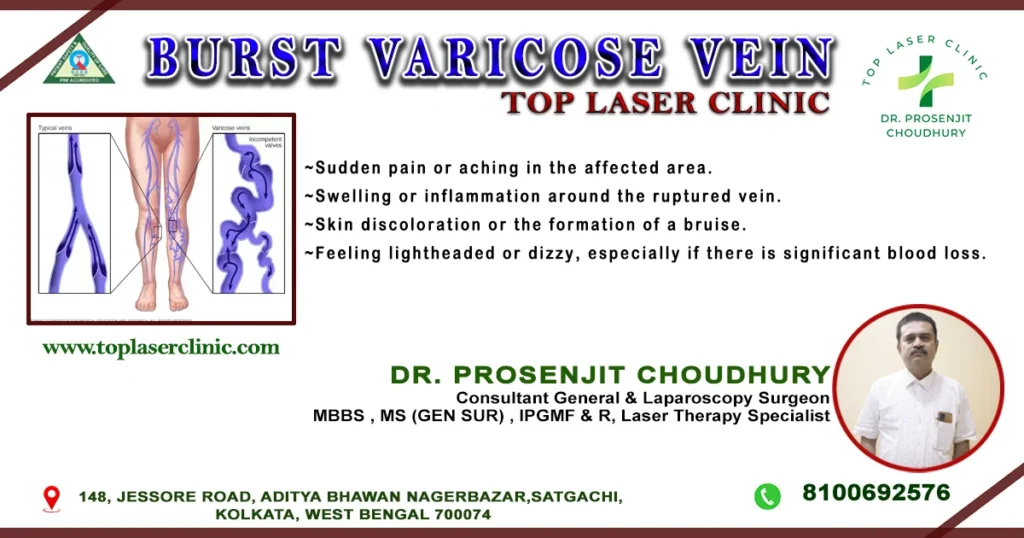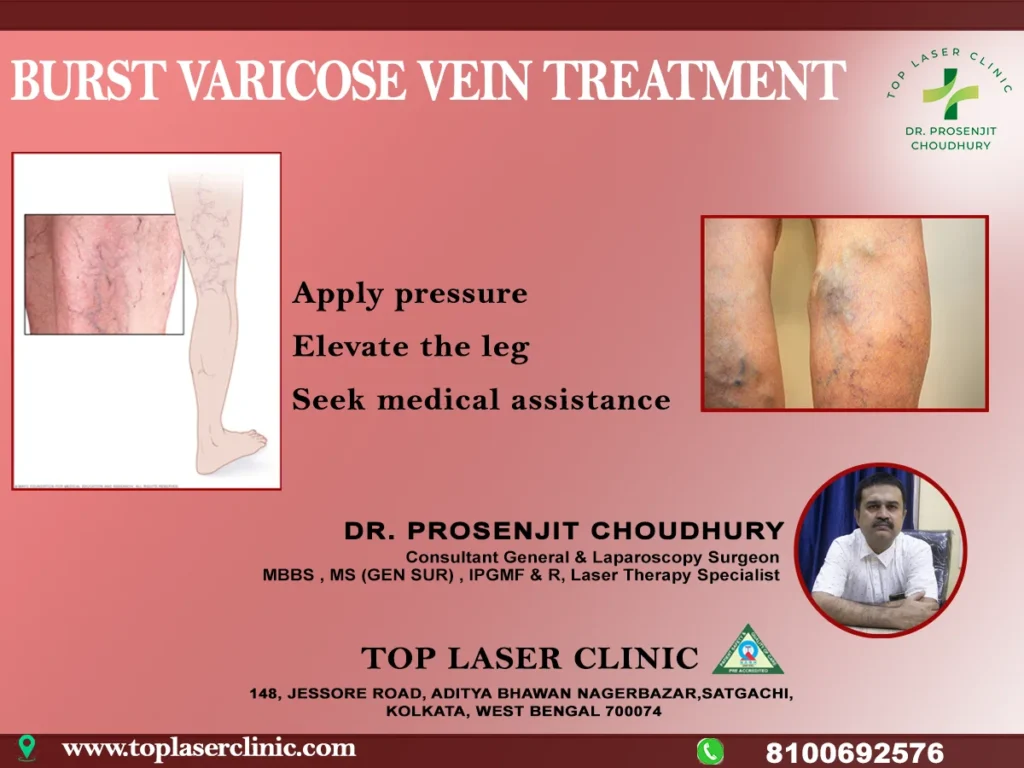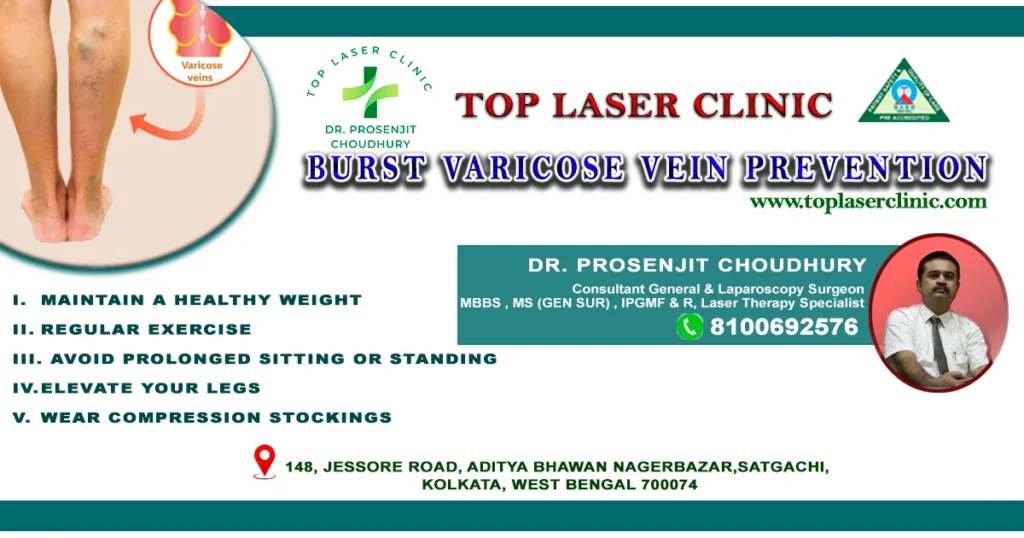
Burst varicose veins, also known as varicose vein rupture or spontaneous venous bleeding, occur when a weakened vein in the varicose vein network ruptures and causes bleeding, can be a distressing and potentially serious condition that requires immediate medical attention.
Table of Contents
When a varicose vein bursts, it can result in sudden bleeding and cause significant pain and discomfort. Not only can burst varicose veins lead to physical symptoms, but they can also have psychological and emotional effects on individuals. Other possible symptoms may include:
- Sudden pain or aching in the affected area.
- Swelling or inflammation around the ruptured vein.
- Skin discoloration or the formation of a bruise.
- Feeling lightheaded or dizzy, especially if there is significant blood loss.
They may experience fear, anxiety, and a loss of confidence due to the unexpected nature of the bleeding and the visible signs of blood. If left untreated, burst varicose veins can lead to complications such as infections and ulcers. Fortunately, there are options available to treat burst varicose veins without the need for surgery.
Burst varicose vein

Treatment:
If anyone experienced a burst varicose vein, it is crucial to seek immediate medical attention. Here’s what you can expect in terms of treatment:
- Apply pressure: Apply firm pressure to the bleeding area with a clean cloth or towel to help control the bleeding.
- Elevate the leg: Elevating the affected leg can help reduce blood flow to the area and alleviate pressure on the veins.
- Seek medical assistance: Contact emergency services or go to the nearest hospital for evaluation and treatment. Medical professionals will assess the severity of the bleeding and determine the appropriate course of action.
- Treatment options: Depending on the severity of the burst vein, treatment options may include applying local compression, cauterizing the bleeding vein, or performing a minor surgical procedure to repair or remove the affected vein.

Prevention:
While it’s not always possible to prevent burst varicose veins, there are measures you can take to reduce your risk:
- Maintain a healthy weight: Excess weight can increase pressure on your veins, so maintaining a healthy weight can alleviate strain.
- Regular exercise: Engaging in regular physical activity can improve circulation and strengthen the muscles that support your veins.
- Avoid prolonged sitting or standing: Take breaks and move around if your job involves extended periods of sitting or standing.
- Elevate your legs: Elevating your legs whenever possible can help reduce pressure in your veins.
- Wear compression stockings: Compression stockings provide support and help improve blood flow in the legs.